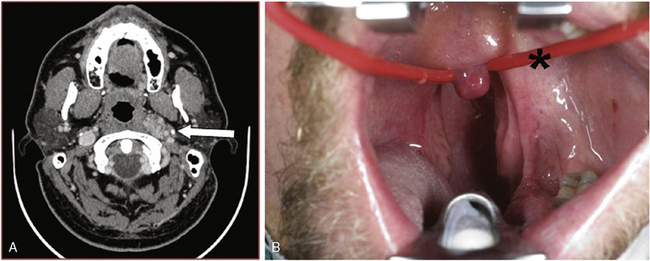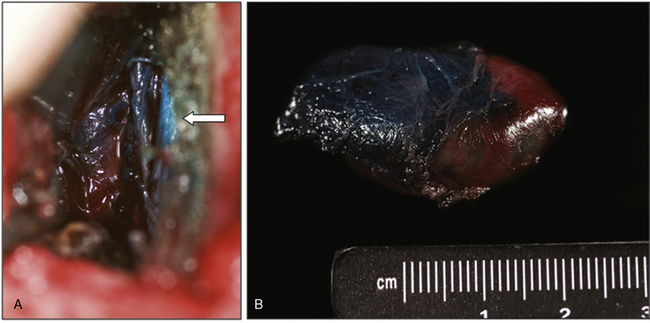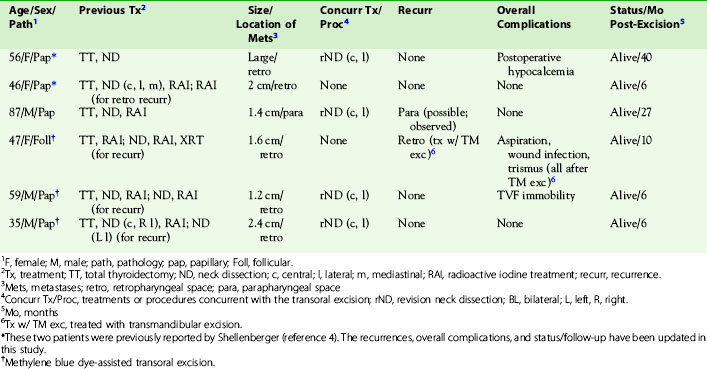Chapter 41 Transoral Resection of Parapharyngeal and Retropharyngeal Thyroid Carcinoma Metastases
Introduction
Metastases from well-differentiated thyroid carcinoma (WDTC) to the retropharyngeal and parapharyngeal lymph nodes are uncommon but require definitive intervention.1,2 Although the classically described transcervical, transparotid, and transmandibular approaches to address tumors of the deep neck compartments offer excellent exposure, the attendant morbidity involved in such procedures can be significant. These include malocclusion, dental injury, and multiple cranial nerve paralyses, among others. For isolated metastases in these difficult-to-access cervical spaces, a minimally invasive approach can provide successful oncologic resection and may prevent unwanted complications.
The transoral approach to the parapharyngeal and retropharyngeal spaces (PPS/RPS) for the management of WDTC has been previously described.3,4 One of the challenges of this approach is the surgeon’s ability to identify the involved node(s), even when ultrasound is available, with this limited transoral access. The injection of methylene blue dye into the primary thyroid carcinomas to identify sentinel lymph nodes for mapping has been reported previously.5 The successful resection of parapharyngeal and retropharyngeal lesions via a transoral approach can be facilitated by ultrasound-guided methylene blue dye injection into the node.6 This chapter describes current techniques for the resection of lymphatic metastases via a transoral approach.
Operative Technique
After the induction of anesthesia and transoral intubation with an oral RAE/nasal tube, the oral cavity is exposed with the Dingmann retractor (Figure 41-1). The ipsilateral tonsillar pillar is exposed by retracting the soft palate with a red rubber catheter. Ultrasonography of the RPS or PPS is performed by an ultrasonographer transorally using an endocavitary ultrasound (US) transducer directed perpendicular to the lesion of interest (Figure 41-2, A). After localization of the involved node, the location of the carotid artery in relationship to the node is established (Figure 41-2, B). Methylene blue dye can then be injected into the node under ultrasound guidance (0.5 to 1 cc).
The resection then proceeds with tonsillectomy as needed, followed by vertical myotomy through the middle constrictor musculature. A combination of blunt and sharp dissection is then performed to identify the dyed metastatic node, as well as the carotid artery (Figure 41-3, A). The involved node, as well as surrounding fascia and nodes, is resected comprehensively (Figure 41-3, B). Frozen section analysis is utilized to confirm the presence of WDTC in the resected specimen. The wound is then closed in layers using 3-0 braided suture as previously described.4
We recently reported our experience in managing metastatic WDTC to the PPS via a transoral approach.6 The results of this experience are outlined in Table 41-1.
< div class='tao-gold-member'>
Stay updated, free articles. Join our Telegram channel

Full access? Get Clinical Tree






